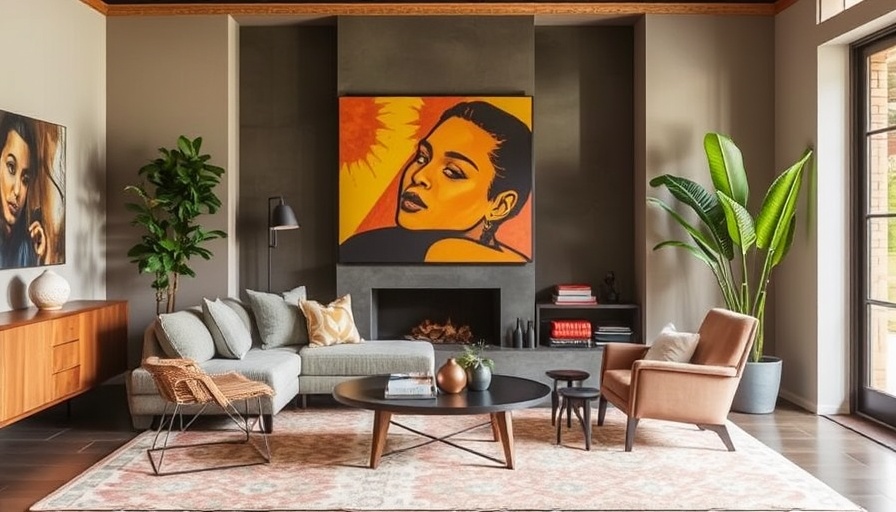
Understanding the Basics of Zoning in Home Design
In the realm of home interior design, zoning refers to the art of defining specific areas within a space for particular functions. This practice is especially beneficial for families in the greater Hampton Roads area, where living spaces are often multicultural and multi-generational, reflecting the diverse backgrounds of military families. By incorporating zoning strategies, you can cultivate spaces that foster interaction, relaxation, and productivity alike.
Why Zoning Matters for Family-Oriented Homes
For families, particularly those living in military communities, the challenge of merging personal identities with family needs can be daunting. Zoning not only delineates active areas like living rooms and kitchens from serene spaces such as bedrooms, but it also curates a sense of flow within the home. This is crucial for families balancing busy schedules and ensuring that each family member has a space that serves their unique purpose.
Incorporating Different Design Styles
Your zoning design is not only about function but also aesthetics. For example, a minimalist living room can coexist with a vibrant children's play area through thoughtful zoning. By using furniture placement and color schemes, you can establish distinctive zones while maintaining a cohesive design throughout the home. For the upper middle-class homeowners in Hampton Roads, exploring combinations like Scandinavian and contemporary styles can result in both practical and beautiful living environments.
Practical Tips for Effective Zoning
When zoning your home, consider these practical insights:
- Define Your Areas: Use rugs, furniture arrangements, and curtains to demarcate different spaces. For instance, a cozy nook in the living room can be created with a simple sofa and a decorative rug.
- Utilize Vertical Space: Incorporate shelves or vertical dividers to separate zones without losing openness. This can give a modern touch to your interior decoration.
- Lighting Choices: Differentiate your zones with varied lighting. Soft lamps can enhance quiet reading areas, while brighter overhead lights may energize social spaces like the kitchen.
Emotional Connection to Space
How someone feels about their home can significantly impact their well-being. Families in southeastern Virginia have a rich military history, and many have faced separations and relocations. Creating clearly designated zones within the home fosters a sense of ownership and comfort. Personalized areas that reflect individual stories or shared family traditions can establish emotional anchors amidst frequent changes.
Final Thoughts and Next Steps
Incorporating zoning in your home's design not only enhances functionality but also cultivates an emotionally supportive environment for families. As you embark on this journey, consider taking advantage of local interior designers or even explore DIY options. Each choice you make can help manifest an abode that resonates with you and your family. If you're ready to take the next step in perfecting your home's layout and aesthetic, reach out to a design specialist today!



Write A Comment